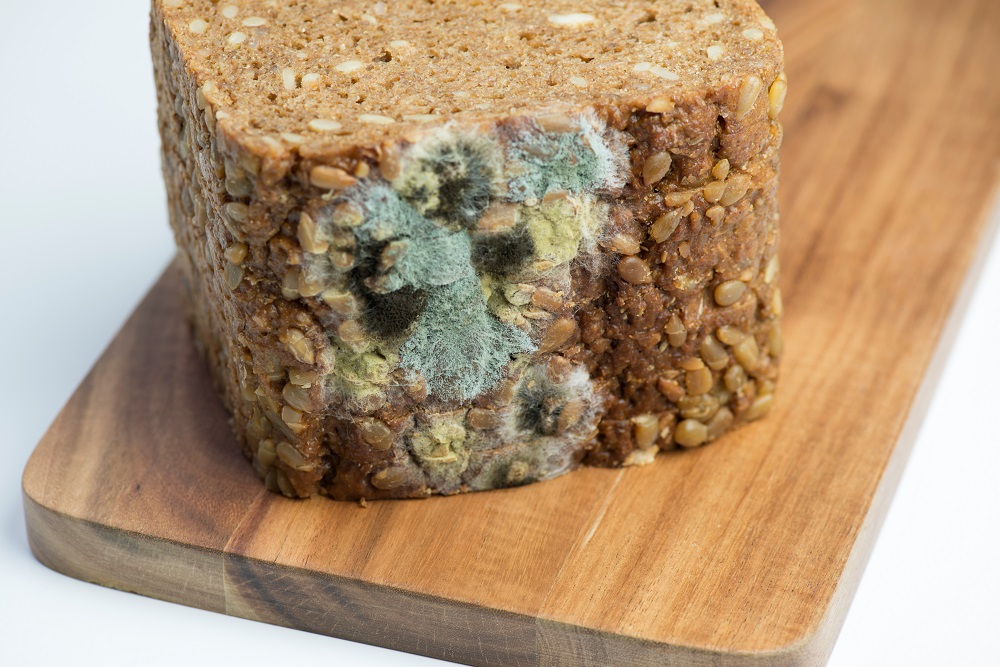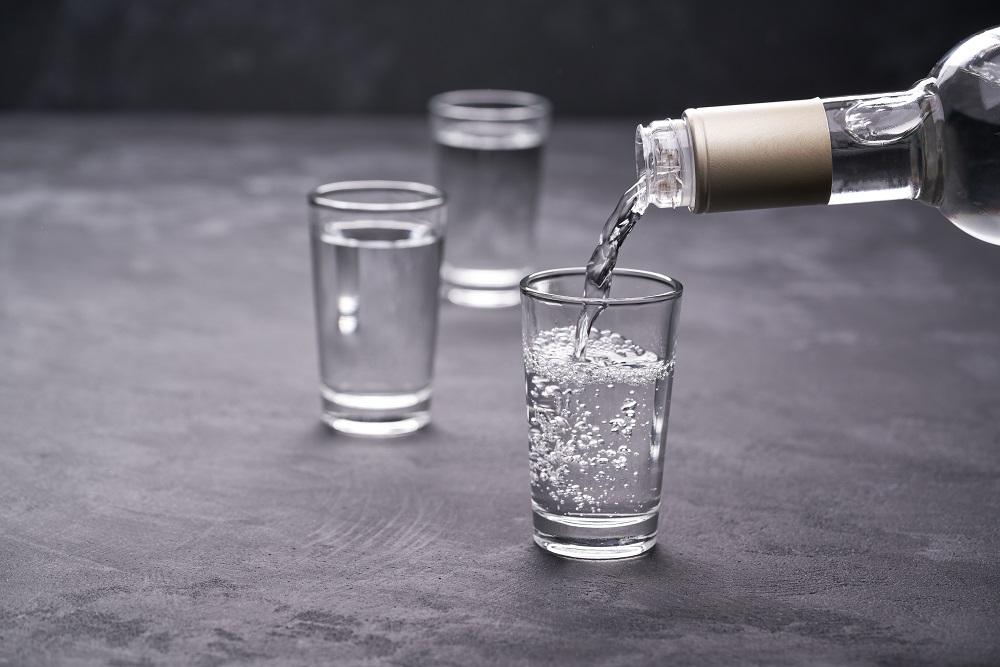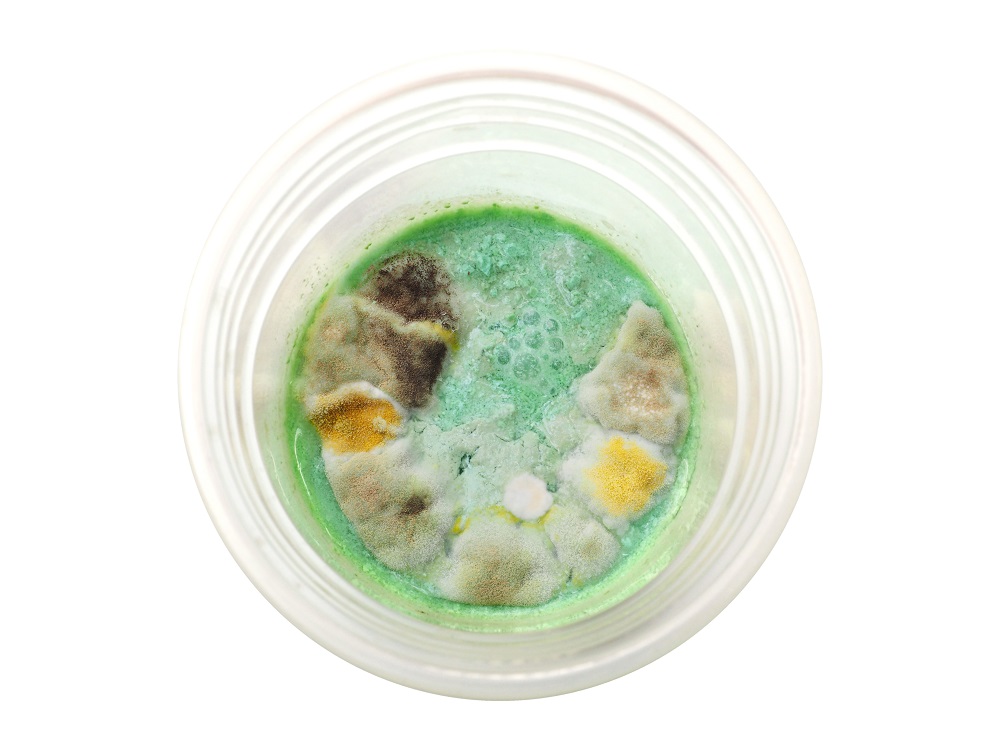Whether there are strange masses floating in one’s bottle of whiskey or if a sanitation professional wishes to know their cleaning chemicals more closely – it is quite a common question to wonder whether alcohol can act as a breeding ground for cultures of mold.
The particular answer to whether mold can grow in alcohol depends on the particular concentration strength of the alcohol, how it was stored, and whether any other additives have made their way into the alcohol’s mixture.
Fortunately, most forms of alcohol cannot grow mold due to the simple fact that it is inhospitable to most forms of life – especially to that of mold and similar fungal bodies.
However, this is not always the case, especially in drinking liquors that have extra ingredients added to it that dilute its relative concentration strength, and as such it is good for one to be cautious if they suspect mold is growing in their beverage.
Why do Food Products Grow Mold?

Mold is a type of microorganism specifically belonging to the fungi branch of microbial life, with a particular preference for growing in wet or otherwise moisture rich environments such as food or beverages.
Mold will usually grow on the surface of food or drinks by way of said food products becoming contaminated with mold spores, microscopic cells produced by larger colonies of mold that are responsible for spreading the specific lineage of the mold’s species.
This type of fungi is especially common in food and drinks due to the conditions that must be met in order for the mold spores to propagate properly – that being the presence of moisture, a nutritive source, heat and proper air flow; all of which may be found in certain alcoholic beverages and similar fluids.
At What Percentage Can Alcohol Grow Mold?
As previously mentioned at the beginning of this article, most forms of alcohol cannot grow mold due to its concentration strength making the propagation and survival of most life forms impossible once submersed in said alcohol.
This becomes less true the lower the concentration strength of the alcohol is, a characteristic that is generally achievable by the dilution of the otherwise pure alcohol with water, adulterants, excipients or additional food purpose ingredients that alter the sensory characteristics of the alcohol.
Generally, the percentage strength per unit volume of 17% is the absolute maximum possible concentration that mold or other microbial life may survive in an ethanol alcohol solution – though even this particular concentration is rather hostile to mold, and will require specific conditions be met in order to host life in any form.
Can Mold Grow in Beer?
Whether or not alcohol can grow in a can or bottle of beer will depend on two factors; that being the particular alcohol concentration percentage of the beer and the method in which it was stored.
Typically, most common store-bought beers will clock in at around 5-6% alcohol by volume, placing it significantly lower than disinfectant grade alcohol or other alcoholic beverages that are not susceptible to the growth of microbiological life such as mold.
This can equate to the majority of beers being at risk of developing mold cultures, especially if stored in a warm environment and exposed to the open air.
However, the majority if not all commercially produced beer brands hold their products to stringent quality standards and as such if the packaging of the beer and the conditions it is stored in are ideal, it is quite unlikely that any sort of mold will grow in the beer.
Can Mold Grow in Spirits and Liquors?

One standard unit of spirits or liquor in the United States is measured at 1.5 ounces of 40% ABV – significantly higher than the ceiling of 17% percentage strength per unit of volume required to eliminate any risk of growing mold cultures or other microbial life.
As such, unless the spirit or liquor has been incorporated into a cocktail or other mixed beverage that lowers the total alcohol concentration of the drink itself, it is unlikely that any sort of microbial life can develop in the alcoholic fluid.
This is all the more so if the spirit or liquor has been kept preserved in the proper manner, such as in an air-tight container away from direct sunlight and other factors that may denature or otherwise weaken the strength and function of the alcohol itself.
Can Mold Grow in Wine?
Unlike spirits and liquors, wine generally has a significant amount of sugar present in its ingredients, and as such is far more susceptible to growing mold and similar fungal cultures than other kinds of alcoholic beverages.
The majority of standard wines possess an alcohol by volume percentage of about 12%, which is sufficiently high enough to ward off the presence of most species of mold, but will not always guarantee that no mold at all can develop.
This is especially applicable if the correct conditions for the development and growth of mold cultures is met, with the wine being left out in the open in a warm room being the worst possible way of storing it for the purposes of avoiding microbial life.
Wine’s ability to grow mold is secondary to the fact that it can expire, however, and as such one must calculate for both factors so as to retain the quality and edibility of the wine if they are not consuming it immediately.
Can Rubbing Alcohol Grow Mold?
Most forms of rubbing alcohol (be it isopropyl, ethanol, or a mixture) are significantly more concentrated in terms of alcohol concentration than alcoholic beverages and as such are not only incapable of developing mold cultures but can also be used to kill mold on other surfaces.
This is especially noticeable in a medical or otherwise sterile setting that requires a quick acting and efficient disinfecting compound that itself does not expire or can otherwise be compromised by the presence of microbial life.
Is Cloudy Liquor a Sign of Mold?
Generally, liquor that is cloudy or has “floaties” present in its fluid are not host to a mold culture – especially if the liquor has been stored in an appropriate manner and is of a rather high alcohol by volume concentration.
This is especially applicable in whiskey, brandy or similar brown alcohols with a rather high presence of certain compounds that are a consequence of improper storage, an improper distillation process or simple ingredient additives.
References:
- Rogawansamy S, Gaskin S, Taylor M, Pisaniello D. An evaluation of antifungal agents for the treatment of fungal contamination in indoor air environments. Int J Environ Res Public Health. 2015 Jun 2;12(6):6319-32. doi: 10.3390/ijerph120606319. PMID: 26042369; PMCID: PMC4483703.
- Korukluoglu, M., Sahan, Y. & Yigit, A. The fungicidal efficacy of various commercial disinfectants used in the food industry. Ann. Microbiol. 56, 325 (2006). https://doi.org/10.1007/BF03175025

